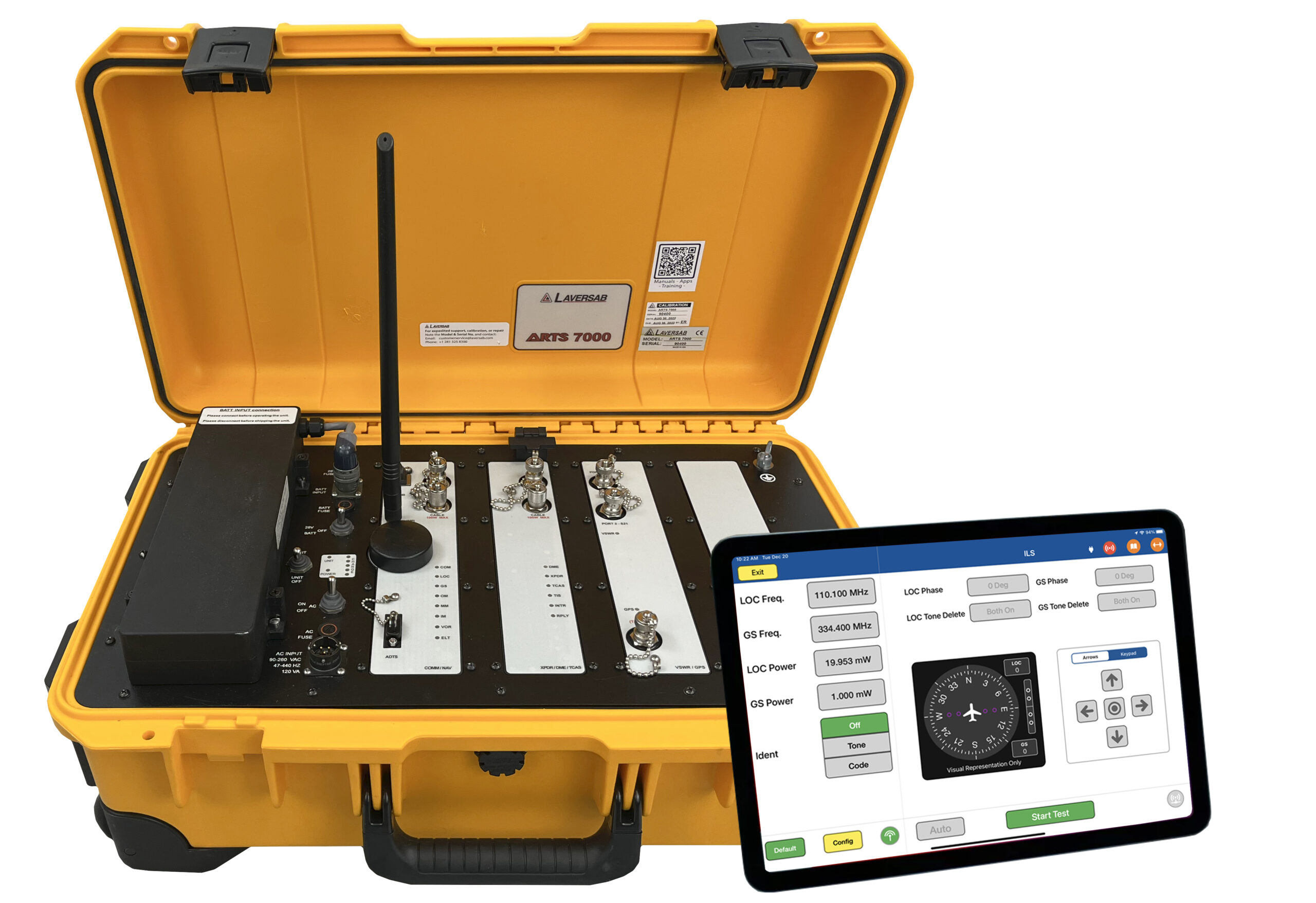Why Test a Radio Altimeter?
Radio altimeters measure the altitude above the terrain where an aircraft is located by determining the length of time it takes a beam of radio waves to travel to ground, reflect, and return to the craft. Such devices are crucial due to today’s reliance on automated control systems and navigation protocols within the aviation industry. Thanks to real-time flight altitude data, radio altimeters enable millions of flights to be completed safely on an annual basis.
Laversab Aviation offers a variety of radio altimeter equipment that allows operators to replicate in-flight conditions,, including a multifunctional all-in-one product known as the Laversab Avionics Radio Test System (ARTS) 7000. One of the key attributes of the ARTS-7000 is that it is designed to meet all aircraft radio test requirements in a single unit. Standard tests include radio communication, navigation, distance measuring equipment (DME), Mode S, automatic dependent surveillance – broadcast (ADS-B), and emergency location transmitters (ELTs). Optional tests include user acceptance testing (UAT) and traffic collision avoidance system (TCAS).
Whether from inside the cockpit or around the aircraft, the ARTS-7000 can be controlled wirelessly via a simple yet intuitive touch-screen interface. In addition, the unit is built to reduce upfront costs, simplify aircraft testing, and cover current and future avionics radio test requirements. For more information on how this unit can also serve as a pulse radio altimeter, keep on reading!
How Does a Pulse Radio Altimeter Work?
There are two main types of altimeter systems: a pulse radar altimeter and a continuous wave (CW) altimeter. These altimeters, which typically operate at altitudes up to 3000 feet. utilize separate transmitting and receiving antennas to the indicator in the cockpit. For the purposes of this article, we will focus primarily on pulse radio altimeters and how they can be tested.
The ARTS-7000 and other pulse radio altimeter test sets offered by Laversab Aviation use radar to transmit radio waves to the ground (or nadir) and measure the time it takes those radio waves to reflect back to the aircraft. In a radio altimeter test, the travel time of the waves, along with the speed of light, is then used to calculate altitude.
Because radio waves take time to reach the ground and return, the frequency of the received signal is delayed relative to the signal that is broadcast. The difference between the two frequencies can be extracted in a frequency mixer, with the resulting output encoding the altitude. This output value is usually on the order of hundreds of cycles per second and is often displayed on analog instruments.
It should be noted that the altitude specified by a pulse radio altimeter is not necessarily the indicated altitude of the standard barometric altimeter. A radar altimeter measures absolute altitude, also known as the height above ground level (AGL) or the height above the underlying terrain. As of 2010, all commercial radar altimeters use linear frequency modulation – continuous wave (LFM-CW), and approximately 25,000 aircraft in the U.S. have at least one radio altimeter on board.
For more information on pulse radio altimeters, contact Laversab Aviation today!
-
Avionics Radio Test Set: ARTS-7000
The Laversab ARTS-7000 is a multifunction all-in-one Avionics Radio Test System – ARTS. It is designed to meet all aircraft radio test requirements in a single unit. The ARTS-7000 is controlled wirelessly – whether from inside the cockpit or around the aircraft. It is controlled via a simple yet intuitive touch-screen interface. The ARTS-7000 is built to reduce upfront costs, simplify aircraft testing, and cover both current & future radio test requirements.
Standard tests: Radio Communication, Navigation, Distance Measuring Equipment, Mode S, ADSB, Emergency Location Transmitters
Optional tests: TCAS, UAT, GPS
The ARTS-7000 is user configurable and expandable to meet future avionics requirements. It is built to test any airborne platform, including General aviation, Commercial airliners, helicopters, and military applications.
